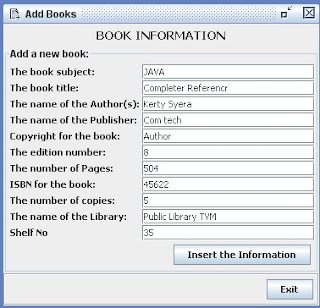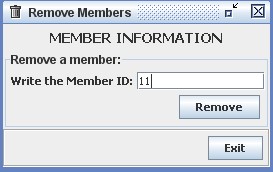JNTUK R19 R-Programming III Year – I Semester-IT
R-Programming
Course Outcomes:
At the end of this course, students will be able to:
1. Demonstration and implement of basic R programming framework and data structures2. Explain critical R programming language concepts such as control structures and recursion.3. Applying mathematical and statistical operations data structures in R.4. Examine data-sets to create testable hypotheses and identify appropriate statistical tests5. Make use of appropriate statistical tests using R and Create and edit visualizations with regression models6. Define model choices and results.
Course Objectives:
JNTUK R19 R-Programming III Year – I Semester-IT
JNTUK R20 Object Oriented Programming through C++ (OOPS through CPP) II Year – I Semester-IT
Course Objectives:
- 1. Describe the procedural and object oriented paradigm with concepts of streams, classes, functions, data and objects
- 2. Understand dynamic memory management techniques using pointers, constructors, destructors, etc
- 3. Describe the concept of function overloading, operator overloading, virtual functions and polymorphism
- 4. Classify inheritance with the understanding of early and late binding, usage of exception handling, generic programming
- 5. Demonstrate the use of various OOPs concepts with the help of programs
Course Outcomes:
By the end of the course, the student will be able to
- 1. Classify object oriented programming and procedural programming
- 2. Apply C++ features such as composition of objects, operator overloads, dynamic memory allocation, inheritance and polymorphism, file I/O, exception handling
- 3. Build C++ classes using appropriate encapsulation and design principles
- 4. Apply object oriented or non-object oriented techniques to solve bigger computing problems
JNTUK R20 Object Oriented Programming through C++ (OOPS through CPP) II Year – I Semester-IT
Library Management System Java Project
Library Management System Java Project
Library Management System Project Abstract:
LMS is a software application useful for librarians in any educational institution for management and handling of typical operations in the library. It manages data through computerized system in a database which eradicates the tediousness in searching a particular book in the entire library.
Existing System:
The existing library management system is very traditional and manual. Most of the things such as record of students who’ve issued the book, no. of books in the library, fine of students, etc. are recorded using pen-paper system. This traditional system requires a lot of time and manpower for performing simple operations in the library.
The drawbacks of existing system are:
- Record keeping is paper-based.
- The system is not computerized.
- There’s high risk of data mis-management.
- Students face a lot of problem while searching a book.
- Chances of book theft from the library is high.
- A lot of paperwork and manpower is to be allocated for simple library management operations.
- The existing system is very inefficient and unreliable.
Proposed System:
The proposed library management software is developed after the analysis of issues, problems, and drawbacks of the existing system. Here, different modules have been assigned for managing and organizing different tasks in a library. Using this software, librarian can store information of all the books, with author name, faculty, etc., available in the library. Only one person can handle the entire library.
The main feature of this system is that all the books available in the library can be displayed in a list so that students need not roam through the entire library to find a book. Additionally, the application effectively maintains the details of users/students to whom books have been issued; it also records the issued date and return date.
Features:
- Add, modify and delete book details into the database.
- Search feature for finding book availability in library stock.
- Add students records upon issue of a book.
- Record issue date, return date, and fine (penalty).
- Payment system/feature allows the librarian to calculate payment details and print bill.
Technologies and Products Used:
- NetBeans 5.0
- Tomcat 5.5 embedded in NetBeans
- Oracle10g Express Edition
- Jboss 4.0.3
- Java Server Pages (JSP)
- Java Beans
- Enterprise Java Beans
Modules Overview:
- Insertion Module: With the help of this module, librarian can insert information and details of users along with book details and time and date of book issue.
- Updating Module: This module allows modification to the existing records and details in the library management system database.
- Report Generation Module: This module allows task such as printing payment details, stock details of books, etc.
SOFTWARE INTERFACE
Add New Book
Listing All Books
Available Books
Borrowed Books
Remove Book
Edit Book Details
Add a Member
Listing all Members
Edit a member
Remove a member
Search for Members and Books
Borrow Books
Returning a Book
List of Issued Books
Reserve a Book
Library Management System Java Project
JNTUK R20 Object Oriented Programming through Java (OOPS through JAVA) I-II-ECE
JNTUK R20
Object Oriented Programming through Java
Course Objectives: This course is designed to:
- The analytical skills of object oriented programming
- Overall development of problem solving and critical analysis.
- Formal introduction to Java programming language
UNIT-1
Introduction to Java : Basics of Java programming, Data types, Variables, Operators, Control structures including selection, Looping, Java methods, Overloading, Math class, Arrays in java. Objects and Classes : Basics of objects and classes in java, Constructors, Finalizer, Visibility modifiers, Methods and objects, Inbuilt classes like String, Character, StringBuffer, File, this reference.
OOPS through JAVA UNIT 1 MATERIAL
Unit-2
Inheritance and Polymorphism : Inheritance in java, Super and sub class, Overriding, Object class, Polymorphism, Dynamic binding, Generic programming, Casting objects, Instance of operator, Abstract class, Interface in java, Package in java, UTIL package.
OOPS through JAVA UNIT 2 MATERIAL
Unit-3
Event and GUI programming : Event handling in java, Event types, Mouse and key events, GUI Basics, Panels, Frames, Layout Managers: Flow Layout, Border Layout, Grid Layout, GUI components like Buttons, Check Boxes, Radio Buttons, Labels, Text Fields, Text Areas, Combo Boxes, Lists, Scroll Bars, Sliders, Windows, Menus, Dialog Box, Applet and its life cycle, Introduction to swing, Creating a swing applet, swing controls and components.
OOPS through JAVA UNIT 3-PART-1 MATERIAL
Event Handling Event handling in java, Event types, Mouse and key events
Unit-4
I/O programming: Text and Binary I/O, Binary I/O classes, Object I/O, Random Access Files. Event driven model, handling events
Unit-5
Multithreading in java: Thread life cycle and methods, Runnable interface, Thread synchronization, Exception handling with try-catch-finally, Collections in java, Introduction to JavaBeans and Network Programming.
JNTUK R20 Object Oriented Programming through Java (OOPS through JAVA) I-II-ECE
How to Download and Install Java 16 on Windows 10
R19 JAVA PROGRAMMING LAB
R19 JAVA PROGRAMMING LAB
Exercise - 1 (Basics)
a) Write a JAVA program to display default value of all primitive data type of JAVA
R19 JAVA PROGRAMMING LAB
Sublime Text 3
2025-26 II-I VR23-OBJECT-ORIENTED PROGRAMMING THROUGH JAVA LAB
2025-26 II-I VR23-OBJECT-ORIENTED PROGRAMMING THROUGH JAVA LAB Netaji_VR23 - OOPS JAVA LAB Course Objectives: ...










































